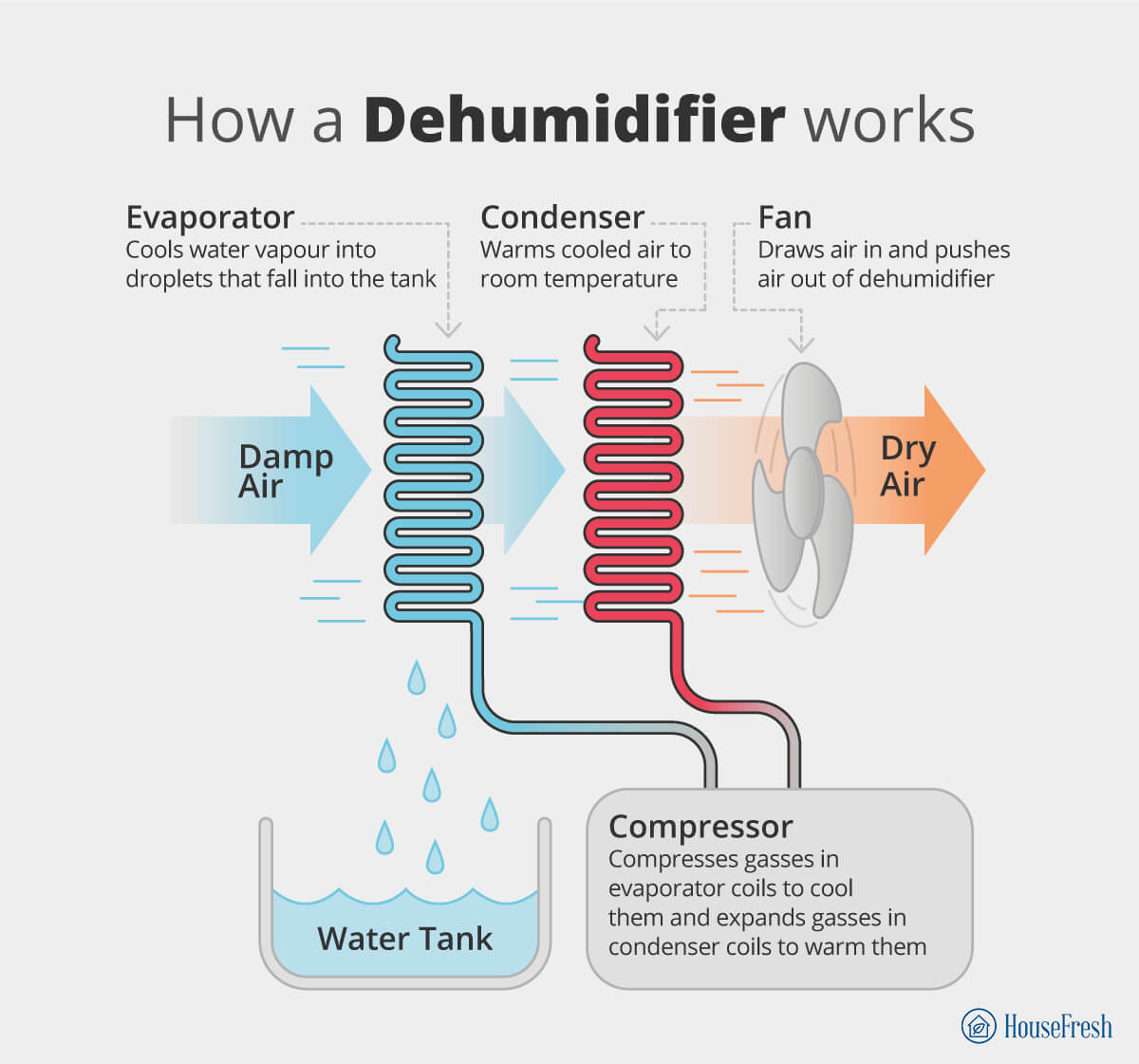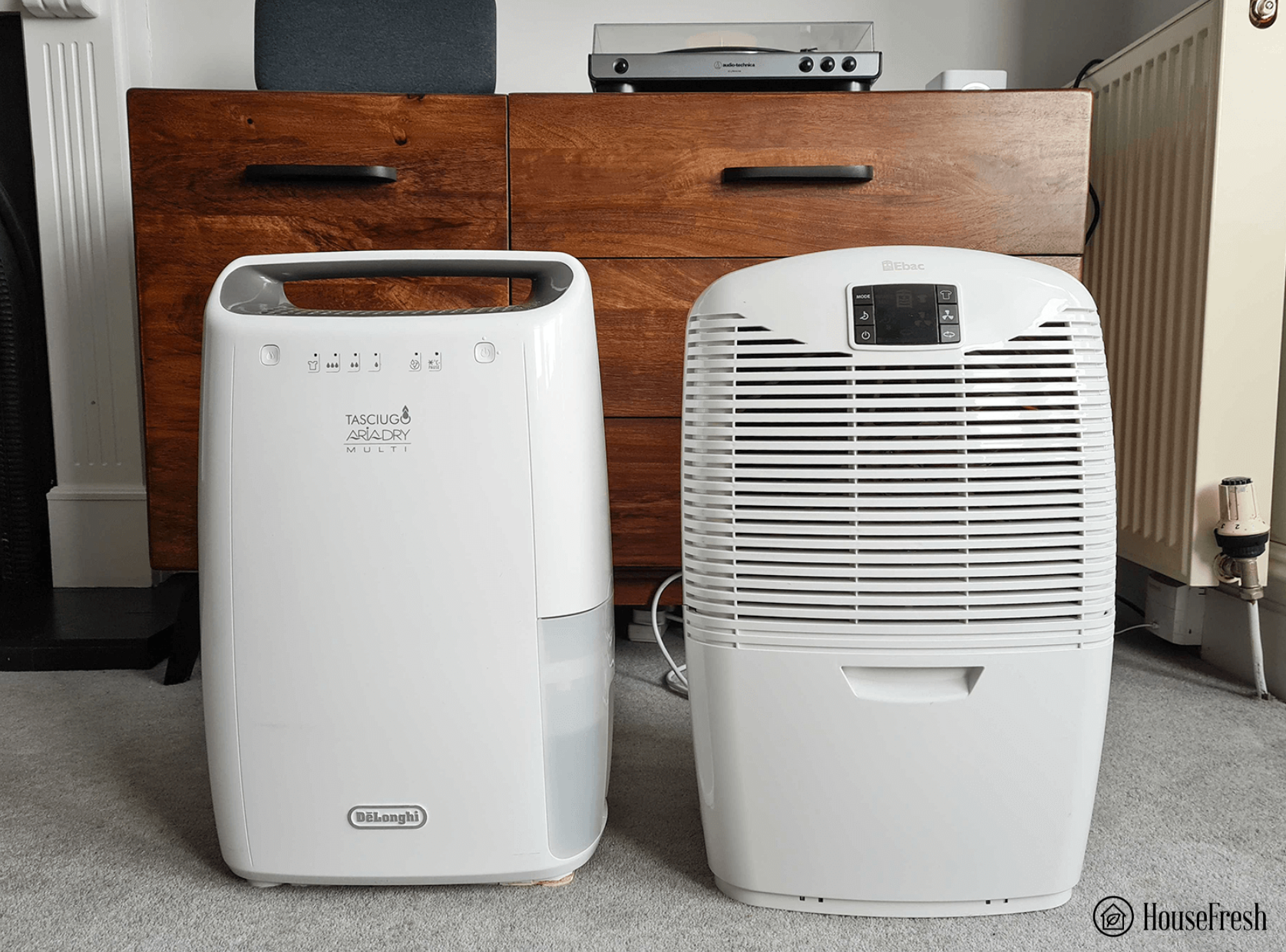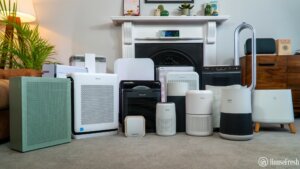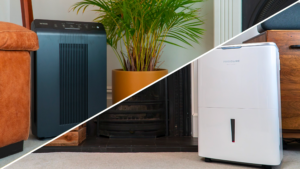There’s often nothing worse than being in a stuffy, sticky room. Yet not only does a humid atmosphere feel unpleasant, but it can also lead to health problems. Condensation and damp smells are other unwanted side effects of too much moisture.
This is where dehumidifiers come in: they can effectively reduce indoor moisture levels, making you feel much more comfortable.
We’ll explore how they do that in this article, so keep reading. We’ll also go into more detail about their uses and (occasionally surprising) benefits.
Finally, you’ll find info about spotting signs that you might need a dehumidifier.
How a dehumidifier works
The term “humidity” essentially means the amount of water vapor in the air and dehumidifiers are designed to eliminate or minimize this vapor.
Dehumidifiers can help decrease condensation and dampness and prevent mold growth by reducing excess moisture in the home. The devices may also help to relieve conditions such as allergies and asthma.
But how do they actually work?
After drawing warm air currents via a fan, the warm air contracts and is fed through cold, refrigerated coils inside the machine. Water subsequently condenses on the coils and is left inside the dehumidifier.
As the water droplets collect, they fall into a storage tank connected to the dehumidifier. The other side of the device then releases cooler, drier air back into your room.

The goal of a dehumidifier is to reduce indoor moisture levels in the air to a relative humidity (RH) of between 30-50%, as recommended by the EPA.
This is considered the optimum level for most buildings, as anything above this scale can lead to the growth of bacteria.
Fortunately, many dehumidifiers are fitted with digital humidistats performing two functions. One of these is to measure and tell you the RH levels in the area or room that it’s placed in. The second is that it allows you to set your own preferred RH level. The dehumidifier will then cycle on and off repeatedly to keep it to the desired level.
If the dehumidifier’s humidistat doesn’t show RH levels (or isn’t fitted with one), you can purchase a handy device called a hygrometer.. If you hang this near the dehumidifier, it will be able to measure the RH levels so that you can gauge when to turn your dehumidifier on and off.
We recommend the Govee Hydrometer Thermometer, which comes with a handy app that connects to your phone.
You might be curious about whether dehumidifiers can also clean the air. The answer is: not really… but then again, kind of.
Check out the reasons why here.
Dehumidifiers: uses and benefits
Aside from simply improving the comfort of a room by removing sticky, moist air, dehumidifiers have a wide variety of uses and benefits.
One of the best ways it can improve your health is by reducing allergy triggers. Common triggers in the home include mold, dust mites, pet dander and pollen. Suppose you suffer from one or more of these allergies.
In that case, you may recognize some of the symptoms:
- Sneezing
- Chest pain
- Eye irritation
- Itching
- Runny nose
- Wheezing
Mold and mildew can be especially problematic for people who are sensitive to them. As mold needs moisture to thrive, dehumidifying the air prevents and inhibits its growth, combating mold allergies.
Like mold, dust mites need a certain amount of warmth and humidity to survive and breed. With regular cleaning, using a dehumidifier will help ease the symptoms of a dust mite allergy by keeping moisture levels low. Ideally, this should be between 35-50%, according to a 2016 study.
Dehumidifiers may also help to relieve and control asthma. High moisture levels can make breathing difficult, whereas drier air (as long as it isn’t too dry) is much easier on the lungs.
People who suffer from the lung condition COPD (chronic obstructive pulmonary disease) may also find that their symptoms, such as difficulty breathing, improve. Again, keeping RH levels below 50% is ideal, and a dehumidifier will help.
On top of the health benefits, using a dehumidifier can lead to other advantages. And one surprising plus is that the device could lower your energy bill. Dehumidifiers make the air cooler, so you won’t need to run the air conditioning system as much. Similarly, it can also help the AC to work more efficiently.
One final bonus of dehumidifiers is that cleaning your home becomes easier! Humidity makes lots of things moist — including surfaces. Dust is likely to cling to wet surfaces, objects and ceiling fans. Reducing humidity can help prevent dust from building up and sticking to such feelings.
Signs you need a dehumidifier
If you’re not sure whether a dehumidifier might benefit you and your family, here are some key signs you might want to consider:
🚩 You or anyone in your home suffers from persistent allergies all year round and year after year.
🚩 There are consistent symptoms of a respiratory illness, for example, a runny nose and coughing.
🚩 You or anyone you live with has a dust mite allergy.
🚩 Moving into a new home has caused your allergies to flare up or seem more intense.
🚩 You notice a continual damp smell in a specific area of your home.
🚩 Clothes and linens always seem to smell damp not long after you’ve washed them.
🚩 There is often condensation on windows and windowsills.
🚩 You spot mold and mildew, particularly dark spots on walls, ceilings and around the shower and toilet.
🚩 When you enter your home, you can feel that the air is muggy and can see the water vapor literally.
🚩 You keep noticing unwanted pests like silverfish, spiders, moths and cockroaches.
🚩 There is water leakage following heavy rainfall.
🚩 You notice water stain marks and think your home may have been flooded in the past.
🚩 The wood in your home, such as on a windowsill, is soft to the touch, indicating that it’s rotting.
If any of these things seem familiar, don’t worry because we’re here to help. Be sure to check out our advice on the best dehumidifiers. You can also find guidance about the most effective dehumidifiers for apartments and bathrooms.
Final thoughts
From condensation on windows to health problems like asthma and allergies, there are often key ways to tell that your home has high humidity.
Fortunately, using a dehumidifier will help to combat the issue. It’s a good idea to go for a device that has an inbuilt digital humidistat, as this can tell you the RH levels in your room.
This means that you can always keep to that 30-50% humidity sweet spot.
SOURCES
- Ashton, D. (2023). HouseFresh. 6 Best Bathroom Dehumidifiers (And One to Avoid). housefresh.com
- Ashton, D. (2023). HouseFresh. 16 Best Dehumidifiers for 2022. housefresh.com
- Allen, P. (2023). HouseFresh. 6 Best Dehumidifiers For Your Apartment. housefresh.com
- Energy Star. (2023). Dehumidifier Basics. energystar.gov
- Environmental Protection Agency. (2022). Why and Where Mold Grows. epa.gov
- Gallagher, P. (2023). Which? How does a dehumidifier work? which.co.uk
- Portnoy, J., et al. (2016). Annals of Allergy, Asthma & Immunology. ncbi.nlm.nih.gov
- Mifflin, M. (2022). The Spruce. Dehumidifier Purpose: Benefits and High Moisture Signs. thespruce.com
- Simon, S. (2022). WebMD. COPD and Humidity. webmd.com
- Singh, M., Jaiswal, N. (2013). Cochrane Library. Dehumidifiers for chronic asthma. cochranelibrary.com
- The Healthy House. (2023). 5 benefits of using a dehumidifier. healthy-house.co.uk
- Watson, K. (2020). Healthline. What Does a Dehumidifier Do? healthline.com
- Wilder, A. (2020). Asthma.net. Dehumidifiers For Asthma. asthma.net
- Yacoubou, J. (2023). HouseFresh. Do Dehumidifiers Clean the Air? housefresh.com






